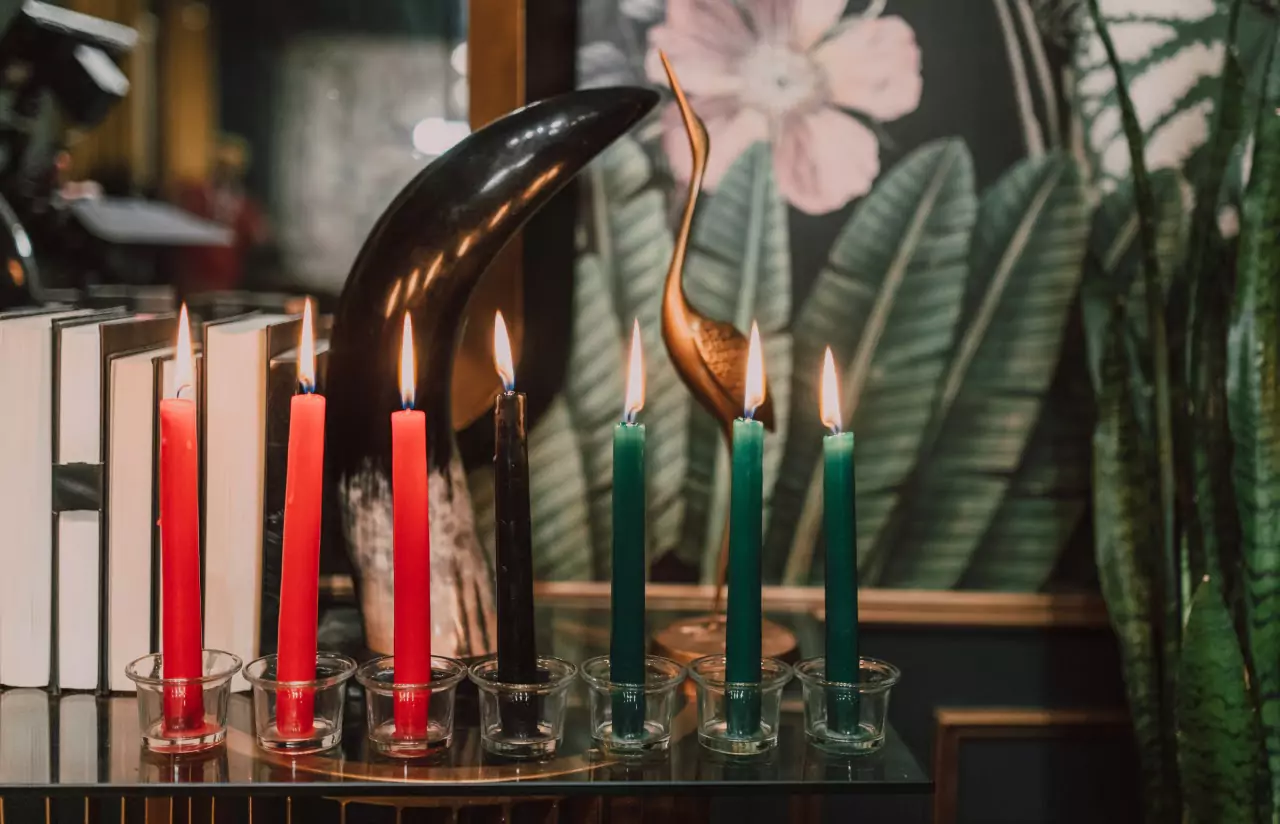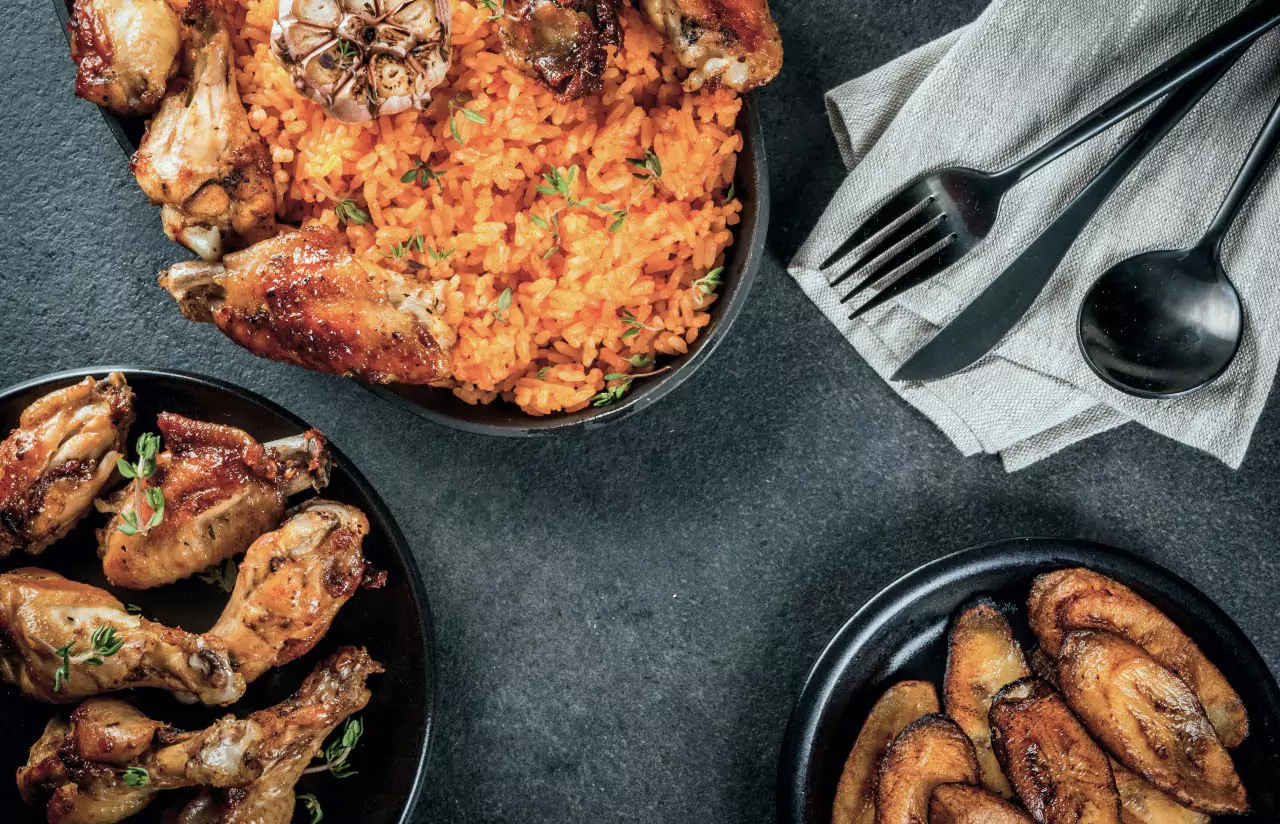The Foods and Traditions of Kwanzaa

Key Takeways
Kwanzaa begins next week! The African/African American holiday occurs annually from December 26 to January 1 and celebrates community, culture, and family. And like most celebrations, it includes an array of delicious nutrient-dense food.
But before we dive into all the delicious, nutritious food, let’s learn a little more about the holiday and its traditions. The word Kwanzaa comes from the Swahili phrase, “matunda ya kwanza,” which translates to “first fruits” (or first fruits of the harvest). And of course, it’s customary to have some rich, traditional foods gracing the table. Here’s a little more about the traditions and food commonly enjoyed during Kwanzaa.
Core Principles and Symbols of Kwanzaa
Kwanzaa is a time for families to come together and celebrate and is a holiday rich in tradition, symbolism, and values. Celebrations usually include storytelling, the lighting of the Kinara (usually by a child within the family), song and dance, large meals, gift-giving, and family gatherings for the seven nights of celebration.
To understand Kwanzaa, it’s essential to know and understand the seven core principles and the seven core symbols of the holiday:
Kwanzaa’s Seven Core Principles

1. Umoja—Unity: To strive for and maintain unity in the family, community, nation, and race.
2. Kujichagulia—Self-Determination: To define ourselves, name ourselves, create for ourselves, and speak for ourselves.
3. Ujima—Collective Work and Responsibility: To build and maintain community together and make our brothers’ and sisters’ problems our problems and solve them together.
4. Ujamaa—Cooperative Economics: To build and maintain our own stores, shops, and other businesses and profit from them together.
5. Nia—Purpose: To make our collective vocation the building and developing of our community to restore our people to their traditional greatness.
6. Kuumba—Creativity: To always do as much as we can, in the way we can, to leave our community more beautiful and beneficial than we inherited it.
7. Imani—Faith: To believe with all our heart in our people, our parents, our teachers, our leaders, and the righteousness and victory of our struggle.
Kwanzaa’s Seven Core Symbols

1. Mazao—Crops: Mazao symbolizes the fruits of collaborative planning and work and the resulting joy, sharing, unity, and thanksgiving part of African harvest festivals. To demonstrate mazao, people place nuts, fruits, and vegetables, representing work, on the mkeka (straw mat).
2. Mkeka—Place Mat - Just as the crops stand on the mkeka, the present-day stands on the past. The mkeka symbolizes the historical and traditional foundation for people to stand on and build their lives.
3. Muhindi—Ear of Corn: The stalk of corn represents fertility and the idea that through children, the future hopes of the family are brought to life. One vibunzi (ear of corn) is placed on the mat for every child in the family.
4. Mishumaa Saba—The Seven Candles: Candles are ceremonial objects that symbolically re-create the sun’s power and provide light. There are three red and three green, and one black candle placed on the Kinara, or candleholder.
5. Kinara—The Candleholder: The Kinara represents our ancestry and the original stalk we came from.
6. Kikombe Cha Umoja—The Unity Cup: On the sixth day of Kwanzaa, the libation ritual is performed to honor the ancestors. Every family member and guest will take a drink together as a sign of unity and remembrance.
7. Zawadi—Gifts: On the seventh day of Kwanzaa, gifts are given to encourage growth, achievement, and success. Handmade gifts are encouraged to promote self-determination, purpose, and creativity.
Traditional Kwanzaa Foods

Kwanzaa is a relatively new holiday—its first celebration was in 1966 in the aftermath of the Watts Riots. Kwanzaa began in the United States but is now celebrated in many countries, primarily those with African descendants. The holiday was created to celebrate African American culture and is traditionally celebrated with foods from many parts of the world.
Kwanzaa’s traditional foods are usually made to reflect the colors of the Pan-African flag or Bendera. The Bendera is red, black, and green. The two most significant foods on the table at Kwanzaa are black-eyed peas and collard greens symbolizing good luck and good fortune.
Not only is this holiday rich in tradition, but the food often served is rich in various nutrients—making for a well-balanced spread. So what are some of the most nutritious offerings? We’ve got a list below to help you out. Of course, these are only averages. So depending on how each dish is prepared, the nutrient content could change. Since Kwanzaa is a holiday that celebrates various African-descendant cultures, every family may have different traditions for what they prepare for their tables. But here’s just a few of our favorites:
- Collard Greens: Collard greens are rich in vitamin C and vitamin A, which may be helpful to support our immune system during the holiday season.
- Black-Eyed Peas: Black-eyed peas are high in fiber and plant-based protein and good low glycemic index choice.
- Okra: Okra contains potassium, vitamin B, vitamin C, folic acid, and calcium—not to mention a good source of fiber!
- African Peanut Stew: How this African Peanut Stew is prepared can alter its nutritional value. Regardless, it’s a warm, comforting option during the cold holiday months!
- Jollof Rice: This African rice dish made with vegetables, tomato paste, and vegetable broth is absolutely delicious and has a significant amount of vitamin C!
- Mashed Sweet Potatoes: Sweet potatoes are a nutrition powerhouse and are a rich source of vitamin C, vitamin A, and antioxidants.
- Sausage & Chicken Gumbo: Spoon up a little more of this one—this dish provides a good source of protein to help you feel satiated.
- Jerk Chicken: Another great source of protein, and it's bursting with flavor from the mix of spices.
How to Optimize these Nutrient-Dense Options at Your Kwanzaa Table

Want to make your Kwanzaa meal more nutrient-filled and blood sugar-friendly? It can be as easy as a few minor modifications with all the nutrient-dense traditional offerings! It helps that there are already so many dishes on the list that are naturally nutritious. For example, you can fill your plate with choices like jerk chicken, greens, and mashed sweet potatoes. They help provide protein and fiber to help balance blood sugar levels and promote sustained energy throughout the day.
Remember to enjoy the holiday! If that means a little indulgence, don’t deny yourself. Simply prioritize the things that are most important to you. Nutrition is only one piece of the health puzzle, so make the adjustments that make sense and enjoy your time with loved ones!
Find the right Nutrisense programto turn insight into progress.
Go Beyond Glucose Data with Nutrisense
Your glucose can significantly impact how your body feels and functions. That’s why stable levels are an important factor in supporting overall wellbeing. But viewing glucose isn't enough. Nutrisense, you’ll be able to learn how to use your body's data to make informed lifestyle choices that support healthy living.
One-to-one coaching
Sign up to access insurance-covered video calls to work with a glucose expert: a personal registered dietitian or certified nutritionist who will help tailor your lifestyle and diet to your goals.
Monitor and measure what matters
With the Nutrisense CGM Program, you can monitor your glucose with health tech like glucose biosensors and continuous glucose monitor (CGM)s, and analyze the trends over time with the Nutrisense App. This will help you make the most informed choices about the foods you consume and their impact on your health.
Find your best fit
Ready to take the first step? Start with our quiz to find the right Nutrisense program to help you take control.

Natalie received her degree in Dietetics from Mansfield University and a Master’s in Clinical Nutrition from the University at Buffalo. Her career has included nutrition education and program development in her local community, adjunct faculty at several collegiate institutions, and clinical nutrition in both inpatient and outpatient settings.




.jpeg)